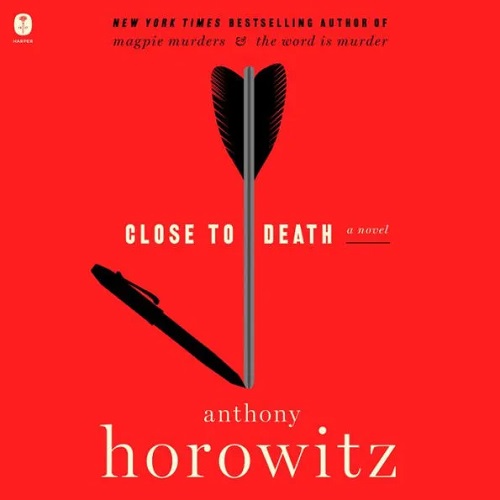 Close to Death (Hawthorne & Horowitz, #5) by Anthony Horowitz
Close to Death (Hawthorne & Horowitz, #5) by Anthony Horowitz Narrator: Rory Kinnear
Format: audiobook, eARC
Source: purchased from Audible, supplied by publisher via Edelweiss
Formats available: hardcover, paperback, ebook, audiobook
Genres: mystery, suspense, thriller
Series: Hawthorne and Horowitz #5
Pages: 419
Length: 9 hours and 12 minutes
Published by Harper, HarperAudio on April 11, 2024
Purchasing Info: Author's Website, Publisher's Website, Amazon, Barnes & Noble, Kobo, Bookshop.org, Better World Books
Goodreads
In New York Times–bestselling author Anthony Horowitz’s ingenious fifth literary whodunit in the Hawthorne and Horowitz series, Detective Hawthorne is once again called upon to solve an unsolvable case—a gruesome murder in an idyllic gated community in which suspects abound
Riverside Close is a picture-perfect community. The six exclusive and attractive houses are tucked far away from the noise and grime of city life, allowing the residents to enjoy beautiful gardens, pleasant birdsong and tranquility from behind the security of a locked gate.
It is the perfect idyll until the Kentworthy family arrives, with their four giant, gas-guzzling cars, a gaggle of shrieking children and plans for a garish swimming pool in the backyard. Obvious outsiders, the Kentworthys do not belong in Riverside Close, and they quickly offend every last one of their neighbours.
When Giles Kentworthy is found dead on his own doorstep, a crossbow bolt sticking out of his chest, Detective Hawthorne is the only investigator that can be called on to solve the case.
Because how do you solve a murder when everyone is a suspect?
My Review:
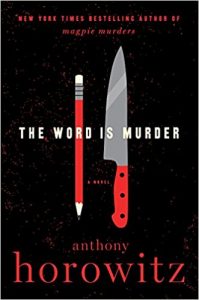 There’s an old saying that familiarity breeds contempt. In the case of Giles Kenworthy and the other residents of Riverview Close it seems as if the contempt came pre-installed – at least on his side and well before he actually got to know any of his neighbors. If indeed he ever bothered to try.
There’s an old saying that familiarity breeds contempt. In the case of Giles Kenworthy and the other residents of Riverview Close it seems as if the contempt came pre-installed – at least on his side and well before he actually got to know any of his neighbors. If indeed he ever bothered to try.
Kenworthy seems to be one of those smug, self-involved, ultra-privileged individuals who go through life completely unable to see other people as, well, people. Meaning that he simply doesn’t notice how much the noise and smoke from his backyard barbecues affects the neighbors he can’t be bothered to invite, he doesn’t care that the loud music he plays on his convertible wakes up the entire neighborhood when he comes home in the middle of the night and parks the damn car in the middle of a shared driveway and blocks the neighbors in.
It seems as if Kenworthy’s inconsideration knows no bounds. He’s certainly brought utter disharmony to what was formerly seemed to be a close-knit and completely harmonious little community.
But is being a boor – even to the point of being a total arsehole (it’s arse, they’re English) – enough of a reason to actually murder someone?
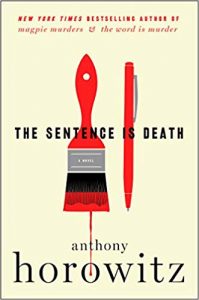 That’s the problem that confronted Detective Superintendent Tariq Khan five years ago when he began his investigation of the murder of Giles Kenworthy, in the foyer of his expensive home, with a crossbow bolt through his throat.
That’s the problem that confronted Detective Superintendent Tariq Khan five years ago when he began his investigation of the murder of Giles Kenworthy, in the foyer of his expensive home, with a crossbow bolt through his throat.
And it’s the exact same question confronting Tony Horowitz – along with the ridiculously short deadline his editor has given him for the fifth book in the series following the investigations of former Metropolitan Police Detective Daniel Hawthorne as Tony follows literally behind the man as his bumbling sidekick.
But not this time, not exactly. Because Hawthorne can’t exactly call up an interesting murder to order. So instead of following the detective as he works a case, Tony is stuck with following Hawthorne on a past case through the extensive notes left by Hawthorne’s previous assistant, the considerably less bumbling John Dudley.
Tony is even more curious about the man who preceded him than he is about whodunnit. By this point in his association with Hawthorne he knows that he’s not going to get even close to the solution until Hawthorne leads him there – most likely by the nose at that.
Which leaves Tony doing a bit of snooping on his own – not into Giles Kenworthy’s murder – but into John Dudley’s exit from Daniel Hawthorne’s life. Something that it looks like no one wants him to look into – but that might just lead him back to an entirely different whodunnit.
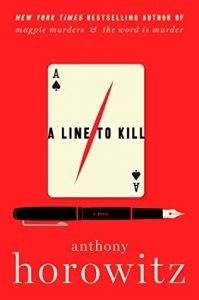 Escape Rating B+: Hawthorne drives Tony crazy. This series generally drives me crazy. This particular entry drove me so crazy I switched from the audio – which was, as always in this series, and with this narrator, marvelous – to the ebook at the halfway point because I was going nuts trying to figure out anything at all. My luck is no better than Tony’s usually is because the cases Hawthorne ends up investigating are so bizarre AND the man dribbles out clues like a miser drops pennies.
Escape Rating B+: Hawthorne drives Tony crazy. This series generally drives me crazy. This particular entry drove me so crazy I switched from the audio – which was, as always in this series, and with this narrator, marvelous – to the ebook at the halfway point because I was going nuts trying to figure out anything at all. My luck is no better than Tony’s usually is because the cases Hawthorne ends up investigating are so bizarre AND the man dribbles out clues like a miser drops pennies.
But by that point I was so caught up in the thing that I didn’t thumb to the end to find out whodunnit – I just read faster to get there in one hour instead of five for the audio.
At first, I have to say that I only hung in because of the audio. Because the first section is all set up and it takes more than long enough that the reader is downright grateful when the body finally drops – particularly as the body that drops seems like it couldn’t have belonged to a more deserving fellow.
At that point, the story switches from third person – which just felt WRONG for this series because it is – back to Tony’s first person perspective where he proceeds to hang a lampshade over just how trite and boring that long set up is.
After all, Giles Kenworthy was a seriously deserving murder victim and all of the issues among the residents of Riverview Close – except for the woman suffering from chronic fatigue syndrome and the death of that poor dog – are very much first world problems and rich people’s first world problems at that. Which does lead back to the question of whether the man deserved to be murdered.
(Maybe for the dog, but not the rest. For the rest, maybe some slashed tires, or a thorough egging of both the house AND the open convertible. Or some maybe not-so-petty vandalism. But not murder.)
Normally this series works by following Tony as he follows Hawthorne and bumbles his way through the man’s genius and misanthropy to a solution. This time was a bit different, and I don’t think it entirely worked.
Because Hawthorne is reluctant to have Tony look into this case, parsimonious with clues and information, and doing his damndest to micromanage Tony’s writing process to the point of obstruction, the story is on two tracks.
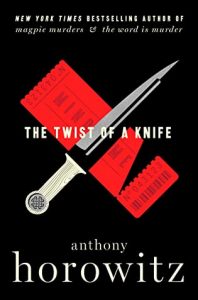 The first is, obviously, the murder. Which is as twisty as ever and Tony is as lost as always but doggedly pursuing a solution even though he can’t see it because he knows Hawthorne can. At least until that thread of the story goes temporarily – and deliberately – pear-shaped.
The first is, obviously, the murder. Which is as twisty as ever and Tony is as lost as always but doggedly pursuing a solution even though he can’t see it because he knows Hawthorne can. At least until that thread of the story goes temporarily – and deliberately – pear-shaped.
But it’s the other track that gave me some pause, because part of the point of the series is that Tony knows little or nothing about Hawthorne and Hawthorne does his best to make sure it stays that way. His mystery is part of, I don’t want to say charm because let’s just say that’s not Hawthorne’s strongest suit, but rather it’s part of the way he works AND what keeps Tony following him. This entry in the series pulled that curtain back a bit in ways that I really hope pay off later because it seemed like some of them belonged more to the author’s James Bond novels than Hawthorne and Horowitz.
In the end, I have to admit that I’m every bit as hooked on this series, as Tony is hooked on following after Hawthorne, sometimes in spite of himself. The books certainly drive me every bit as crazy as Hawthorne does Tony.
Which means that, as differently crazed as this entry was from some of the previous books in the series, I’m still riveted – sometimes in spite of myself. So I’ll be back for the next – whenever either Hawthorne manages to run across a conveniently timed twisted murder – or Tony gets faced with an urgent deadline for book six!

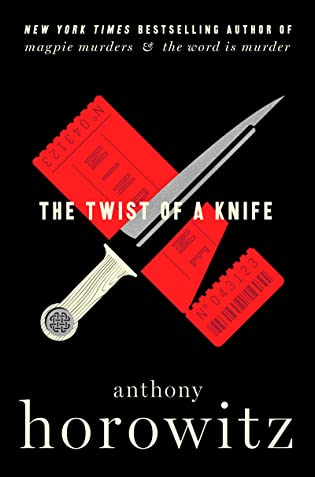 The Twist of a Knife (Hawthorne and Horowitz Mystery, #4) by
The Twist of a Knife (Hawthorne and Horowitz Mystery, #4) by 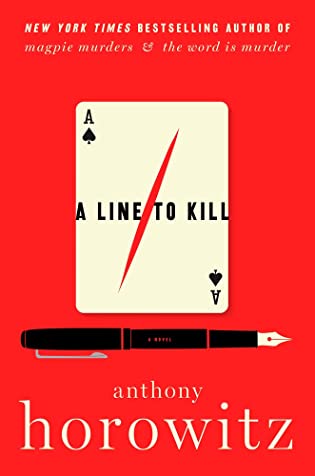 A Line To Kill (Hawthorne and Horowitz Mystery, #3) by
A Line To Kill (Hawthorne and Horowitz Mystery, #3) by 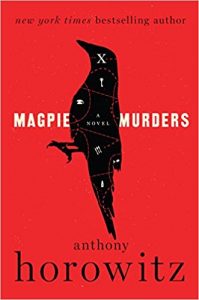 Escape Rating B+: Both of the author’s current series, the
Escape Rating B+: Both of the author’s current series, the 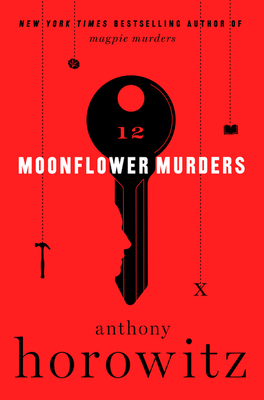 Moonflower Murders (Susan Ryeland #2) by
Moonflower Murders (Susan Ryeland #2) by 
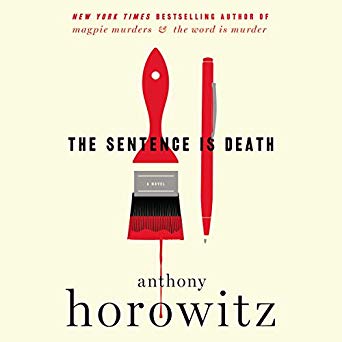 The Sentence is Death (Hawthorne, #2) by
The Sentence is Death (Hawthorne, #2) by 
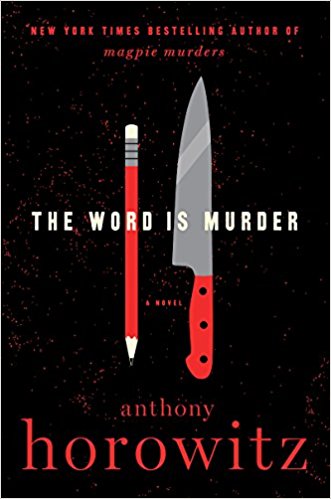 The Word Is Murder by
The Word Is Murder by 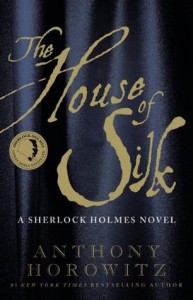 What adds to the verisimilitude is the way that author Anthony Horowitz seems to include so many easily verifiable details of his own work, if not his own life. He is the creator of two of my favorite TV series,
What adds to the verisimilitude is the way that author Anthony Horowitz seems to include so many easily verifiable details of his own work, if not his own life. He is the creator of two of my favorite TV series, 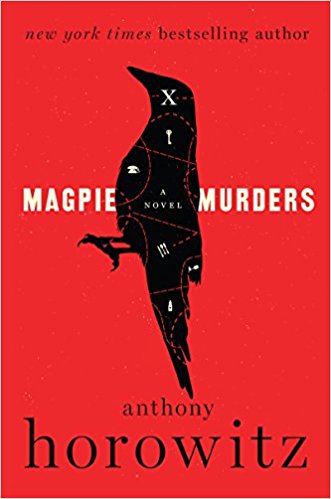 Magpie Murders by
Magpie Murders by